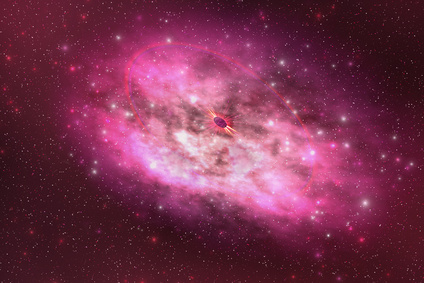A discovery is a star called H.L. Tauri which is five hundred light years away from earth. It has a circumstellar disk mass of 0.13 of the sun. Tauri is a very young star approximately one hundred and twenty five years old. It’s age has been determined by the fact that is it far to luminous for it’s surface temperature. Planets are hard to see over vast distances but preplanetary disks reflect much more of their starts light. A preplanetary disk has been discovered near H.L. Tauri due to the image processing techniques that were developed in the early 1980’s. This is a very important discovery to give credence to the existence of other solar systems. The matter that made up earth with all it’s elements and ultimately life was originally formed by a gaseous planetary disk that broke up into fragments as a result of disunity and later condensed into planets. The H.L. Tauri discovery may suggest solar systems are a natural result of formation of a star. It is therefore possible that earth-like planets may be possible in our galaxy.
LUNA PHASE PRO ASTRONOMY SOFTWARE FOR MOON OBSERVERS Click on highlighted https: line
https://52fdb1pctz6-9l9i4bwf5x7xao.hop.clickbank.net/
In considering earth-like habitable planets, it is important to determine which stars would be appropriated to heat and be hostable to such planets. To be habitable, a planet must revolve within the ecosphere of a star. This represents the distance between the boiling and freezing point of water. A giant star would have a very large ecosphere while a dwarf star maintains a very small ecosphere. It is not inconceivable to picture an earth-like planet revolving around a giant star some seventy times the sun`s mass at approximately forty times the distance of Pluto`s orbit. At such a distance, the star`s disk would be barely visible but it would give the same amount of heat and light that the sun gives earth. There would however be the problem of the higher frequency radiation emitted by this star of spectral class O. These shorter frequencies are very harmful to life as we know it. However this problem can easily be overcome by a more dense atmosphere of ozone. The real problem is the massive stars of A, B, and O type varieties are so large that they burn hydrogen fuel at a very rapid rate. A type stars may stay on the main sequence one billion years. B type stars stay on sequence for 100 million years and O types, only one million years. These stars would be poor incubators of earth-like planets. The earth began with an atmosphere of hydrogen and helium. These gases soon escaped into space due to the incredible amount of volcanism taking place during the first one hundred million years of earth`s history causing a carbon dioxide atmosphere to develop. Since the evolution of the first simple plant life forms took approximately one billion years, approximately the same amount of time has elapsed for plant life to change the atmosphere from carbon dioxide to oxygen and nitrogen. High mass stars only live at maximum one billion years indicating that a planet would not have sufficient time to develop an oxygen-rich atmosphere. Therefore such high mass stars could not contain earth-like planets (Asimov I. Extraterrestrial Civilization p111 Crown Publishers New York).
